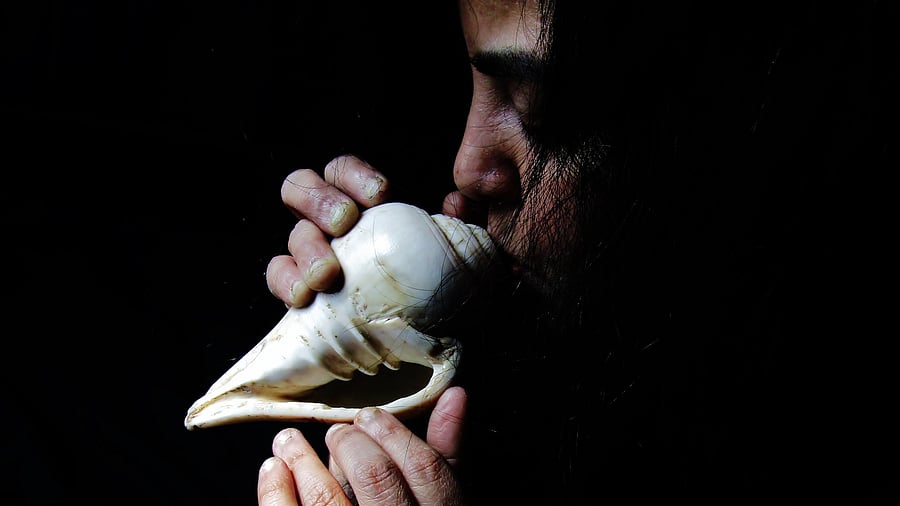
The blowing of the conch shell creates strong vibrations and airflow resistance, which likely strengthens the muscles of the upper airway
Credit: iStock Photo
New Delhi: Blowing conch shell (sankh) is a practice that millions of Indians follow every day. Do it for 15 minutes daily and chances are high that one will get rid of a major sleep disorder associated with loud snoring and day-time sleepiness, Indian medical researchers have found.
A proof-of-concept study by doctors in Jaipur reveals that people who practise blowing through a conch shell regularly for six months have experienced a reduction in their obstructive sleep apnoea (OSA) symptoms.
The OSA is a common sleep disorder where breathing repeatedly stops during the night due to a blocked airway. It leads to loud snoring, restless sleep and daytime sleepiness. It also increases the risk of high blood pressure, heart disease, and stroke.
During his clinical practice, Krishna Sharma, a Jaipur-based doctor associated with the Eternal Heart Care Centre and Research Institute has found that several of his patients who practice blowing shankh report experiencing lesser symptoms.
Sharma teamed up with a few other researchers to test traditional practice’s efficacy in a scientific way.
His study included 30 people with moderate OSA, aged between 19 and 65, who were assessed between May 2022 and January 2024. They were monitored throughout a night’s sleep, and asked questions about the quality of their sleep and how sleepy they feel during the day.
They were randomly assigned to either practise blowing through a conch shell (16 patients) or to practise a deep breathing exercise (14 patients).
Participants were encouraged to practise at home for a minimum of 15 minutes, five days per week. After six months, they were reassessed.
Compared to the people who practised deep breathing, those who practised shankh blowing were 34% less sleepy during the daytime.
They reported sleeping better and had four to five fewer apnoeas (where breathing stops during sleep) per hour on average. They also had higher levels of oxygen in their blood during the night.
“This was only a proof-of-concept study. We will be conducting a bigger study involving five hospitals in Rajasthan. We have received the Ethics Committee approval and will start recruiting patients from next month,” Sharma told DH.
According to him, the way the shankh is blown is quite distinctive as it involves a deep inhalation followed by a forceful, sustained exhalation through tightly pursed lips.
"This action creates strong vibrations and airflow resistance, which likely strengthens the muscles of the upper airway, including the throat and soft palate – areas that often collapse during sleep in people with OSA," he said.
The shankh's unique spiralling structure may also contribute to specific acoustic and mechanical effects that further stimulate and tone these muscles.
Sharma said blowing a trumpet might also be beneficial but there was no scientific study to back up such an assumption. There are, however, studies to show that playing didgeridoo – a wind instrument – improves sleep for OSA patients.
“This is an intriguing study that shows the ancient practice of shankh blowing could potentially offer an OSA treatment for selected patients by targeting muscles training,” said Sophia Schiza, sleep researcher at the University of Crete, Greece, who was not involved in the research.
“A larger study will help provide more evidence for this intervention which could be of benefit as a treatment option or in combination with other treatments in selected OSA patients.”
Besides doctors from Eternal Heart Care Centre and Research Institute, researchers from the University of Rajasthan and Lal Bahadur Shastri College of Pharmacy were also part of the study that appeared in ERJ Open Research.
